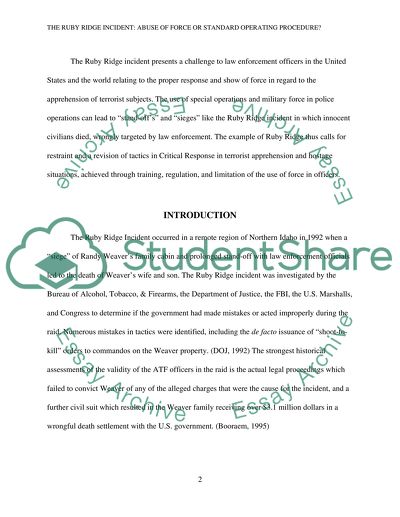Cite this document
(“The Ruby Ridge Incident: Abuse of Force or Standard Operating Research Paper”, n.d.)
Retrieved from https://studentshare.org/law/1432115-the-ruby-ridge-incident-abuse-of-force-or-standard-operating-procedure
Retrieved from https://studentshare.org/law/1432115-the-ruby-ridge-incident-abuse-of-force-or-standard-operating-procedure
(The Ruby Ridge Incident: Abuse of Force or Standard Operating Research Paper)
https://studentshare.org/law/1432115-the-ruby-ridge-incident-abuse-of-force-or-standard-operating-procedure.
https://studentshare.org/law/1432115-the-ruby-ridge-incident-abuse-of-force-or-standard-operating-procedure.
“The Ruby Ridge Incident: Abuse of Force or Standard Operating Research Paper”, n.d. https://studentshare.org/law/1432115-the-ruby-ridge-incident-abuse-of-force-or-standard-operating-procedure.


